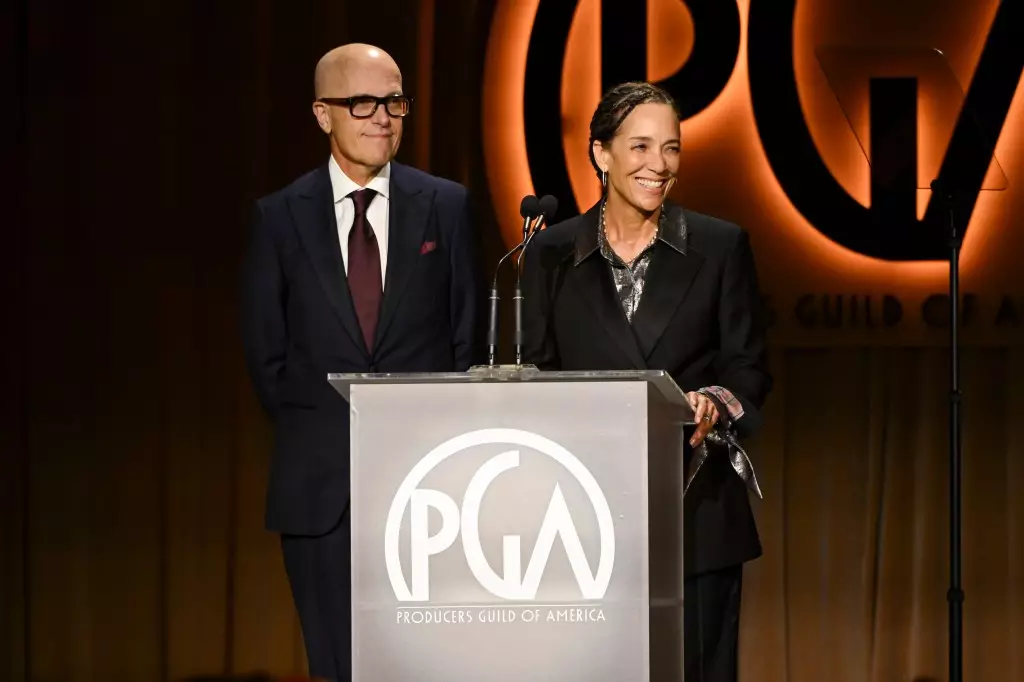The recent wildfires have left Los Angeles grappling with unprecedented devastation. In the wake of such catastrophic events, the film industry—a cornerstone of the city’s identity—finds itself at a crucial crossroads. During the prestigious PGA Awards held at the Fairmont Century Plaza, co-president Donald De Line delivered an impassioned speech emphasizing the necessity of keeping production within the city. He articulated a collective grief experienced by guild members who saw their lives and communities disrupted. With an industry as multifaceted as Hollywood, this plea extends beyond mere words; it represents a call to unite for the recovery and restoration of local jobs.
De Line’s remarks were not just a reflection of the personal impact of the fires but a broader vision for the revitalization of Los Angeles as a production hub. “The movie business made Los Angeles, and now it’s time for Los Angeles to make movies again,” he articulated. This connection between the survival of the city and the continuation of its film industry cannot be understated. The heart of this exhortation lies in the understanding that local productions can serve as both economic catalysts and community builders. Bringing jobs back to L.A. is vital—not only for the economy but also for fostering communal ties.
In response to the fires, the Producers Guild of America (PGA) has taken proactive measures by establishing a fund aimed at supporting those impacted by the disasters. President Stephanie Allain reported that the PGA has successfully raised over $450,000 to aid those displaced. This initiative not only provides financial relief but also signals that the guild values the wellbeing of its members. By creating robust support systems, the industry can demonstrate solidarity and reinforce the lesson that artists and workers are the backbone of Hollywood.
The acknowledgment by Jen Statsky, co-creator of the acclaimed series “Hacks,” of the specific communities that contribute to the success of storytelling in L.A. is essential. By highlighting the significance of shooting in locations like Altadena, she paints a vivid picture of the film industry’s intertwined relationship with local neighborhoods. Such insights reinforce the idea that filming in these authentic environments enriches narratives while also supporting local businesses and cultures. This symbiotic relationship serves as a reminder of the human element often overshadowed by the glitz and glamor of Hollywood.
As discussions about production return to L.A. continue, it’s clear that the industry faces challenges but also possesses the potential for recovery. There’s an opportunity here for studios, financiers, and streaming services to collaborate closely and invest in local productions that not only generate revenue but also re-establish a sense of normalcy within a community struggling to heal. The drop in shooting permit applications since the fires is a clarion call to action—now more than ever, the creative forces that define Hollywood must rally together to restore their beloved city to its former glory and beyond. Reinvigorating Los Angeles through its film scene will require innovation, cooperation, and a commitment to community, but the rewards could be monumental.

